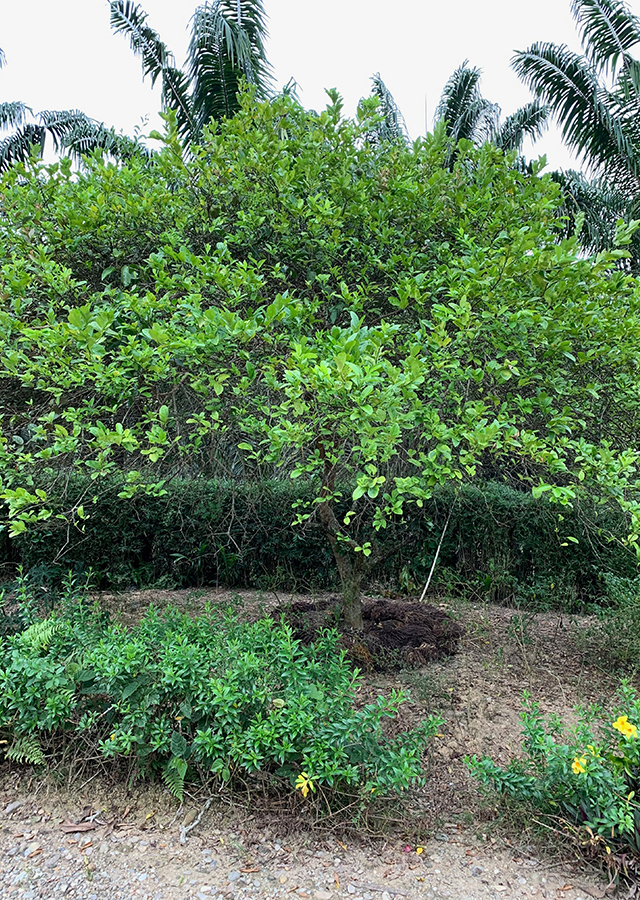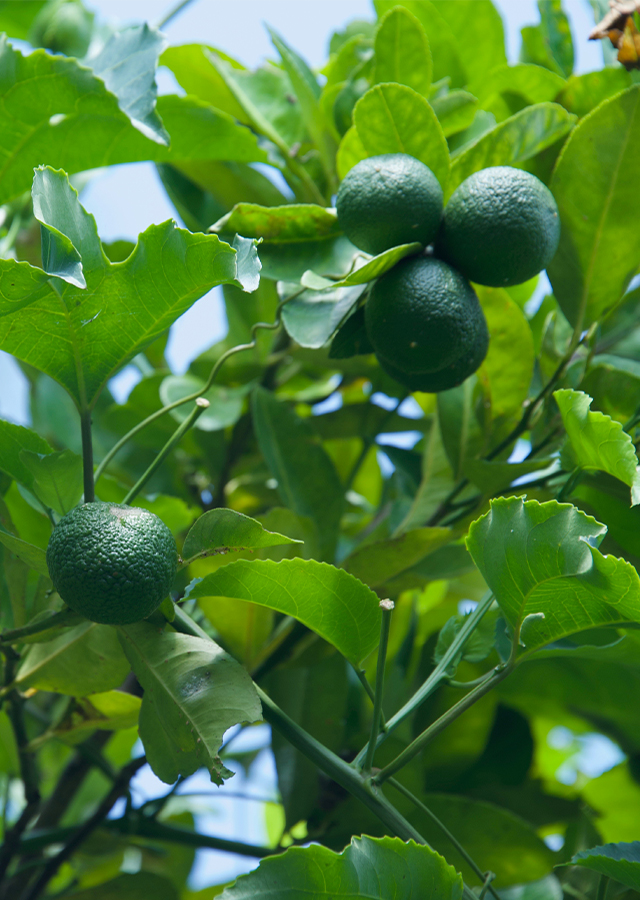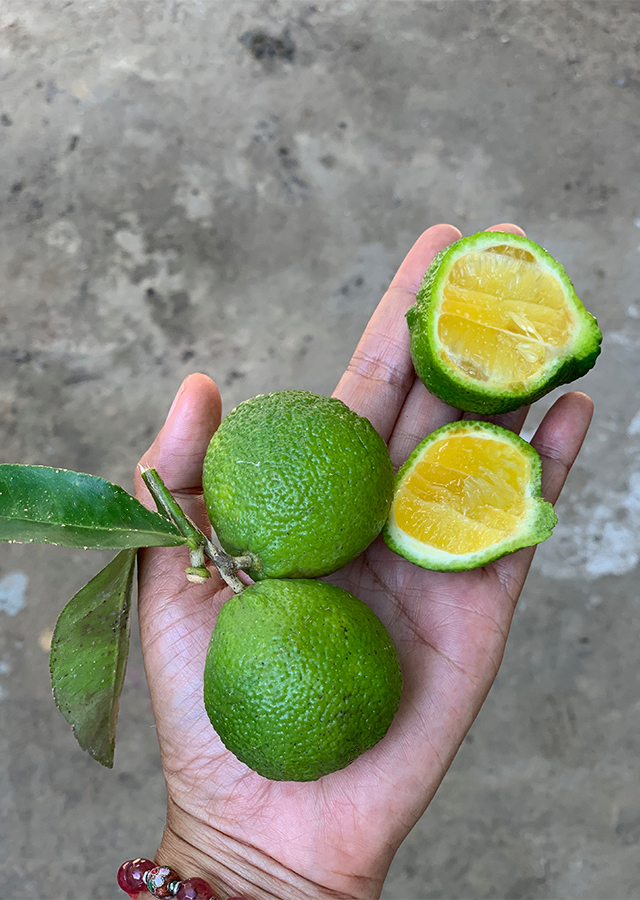Jambhiri Orange
Citrus × taitensis Risso
Rutaceae
Location in our garden
Orchard



Synonym
Citrus x jambhiri Lush
Citrus x verrucosa Nakamura
Habitus
Shrubs. Shrub or small tree, annual, about 6 m tall
Part Used
Fruit
Growing Requirements
Full Sunshine
Habitat
Riverbanks
Forest
Terrestrial
Overview
Native from Northeast India which has polyembryonic properties so that crossbreeding can occur naturally. This species is the fruit of a cross between a mandarin orange and a lime. Jambhiri orange also has a shape similar to kaffir lime, but the aroma is different. In Indonesia, this type of oranges are also very popular among the Toba Batak people. In the traditional culinary world, it is the main ingredient used in the manufacture of a typical Batak Toba food known as 'dekke naniura'. Apart from being a cooking spice, this species also has health benefits and has been widely used in traditional Ayurvedic medicine. Based on the results of the study, this species is also known to contain essential oils that are useful as anti-inflammatory, antitumor, antibacterial, and antifungal properties. And in this fruit juice there is also a large amount of vitamin C (about 70.0 mg/100 g) which has an important role as a natural antioxidant.
Vernacular Names
Godha-tulia (Assamese), Jambhiri nibu (Hindi), Kada-narollgi (Kannada).
Agroecology
Can be found growing along riverbanks, on the edges of rainforests, and often persisting around old habitats. Generally, this plant can be cultivated at an altitude of 1 - 1,200 m above sea level. Prefer loam soil to sandy loam with clay fraction 7 - 27%, dust 25 - 50% and sand < 50%, sufficient humus, good water and air management. Suitable for planting in Andosol and Latosol soils, with soil pH ranging from 5.5 – 6.5 with an optimum pH of 6. This plant requires 5 - 9 wet months (rainy season), which is necessary for flower and fruit development to keep the soil moist. In Indonesia, oranges really need enough water, especially in July - August. Optimal growth also requires temperatures between 25 - 30 ºC, but there are also those that can grow normally at 20 and 38 ºC with optimum humidity of around 70-80%. This plant also likes a place with full sun.
Morphology
- Roots - tap roots.
- Stems - hairless, barbed stiff, sturdy and paired.
- Leaves - strong lemon scent when rubbed, unifoliolate, alternately located, elliptical lamina, hairless, shiny, leaf tip blunt or tapered, leaf base cuneate, leaf margins more or less completely toothed, fine or rough, green, petiole leaves 5–15 mm long, slightly winged, continuous at the apex with a lamina.
- Flowers - single or in small clusters of flowers, sweet-scented, white, sometimes with a pinkish tinge, with 4-5 petals 10 mm long each.
- Fruits - oval (ovoid), oval (oblong) to globose, nipples are formed at the end of the fruit with rough or irregular skin or warty. The rind is 2-3 cm thick, aromatic and encloses multiple (almost 9-10) segments or loci. Each locus encloses an abundant juice sac containing 3-5 seeds. The skin of the fruit is dark green when unripe and yellow when ripe, the flesh is pale yellow, the taste is sour and sweet. In the center of the fruit is a thick thread-like structure that holds the carpel together to form a column.
Cultivation
Propagated by seeds and grafting.
Chemical Constituents
Essential oil (γ-terpinene, toluene, β-osimen, 1-methyl-2-(1-methylethyl)-benzene, limonene, β-pinene, germasren, α-thujen, 2,3,5-trimethyl-1,3,6-heptatriene).
Traditional Medicinal Uses
- Helps overcome arthritis and indigestion.
- Has activity as an antioxidant, antibacterial, antitumor, antifungal, and anti-inflammatory.
Part Used
Reference Sources
- Royal Botanic Gardens. Plant of the World Online: Citrus × taitensis Risso. https://powo.science.kew.org/taxon/urn:lsid:ipni.org:names:772070-1. 05-04-22.
- Chaudhari S. Y. et al. 2014. Pharmacognostical evaluation of Citrus jambhiri Lush. fruit. Ancient Science of Life 34(2): 96–99. doi: 10.4103/0257-7941.153469. https://www.ncbi.nlm.nih.gov/pmc/articles/PMC4389400/. 05-04-22.
- PlantNET. New South Wales Flora Online: Citrus x taitensis Risso. https://plantnet.rbgsyd.nsw.gov.au/cgi-bin/NSWfl.pl?page=nswfl&lvl=sp&name=Citrus~x+taitensis. 05-04-22.
